Will GM and Ram Bring Large Displacement Diesel Engines to the Pickup Truck Market?
In the world of heavy-duty diesel pickups, it’s inarguable that Ford is pulling away from the rest of the field. Since the debut of its high output 6.7L Power Stroke for the ‘23 model year—a 500 hp, 1,200 lb-ft version of its popular, proven, compression ignition V8—Super Duty’s have been selling like hot-cakes. So how do GM and Ram plan to reel Ford in? The rumor mill around Detroit has it that General Motors may have plans to build a large displacement diesel V8 as early as 2026. And while there aren’t yet any indications as to what Ram and Cummins plan to do, we have a few theories as to what they might come up with.
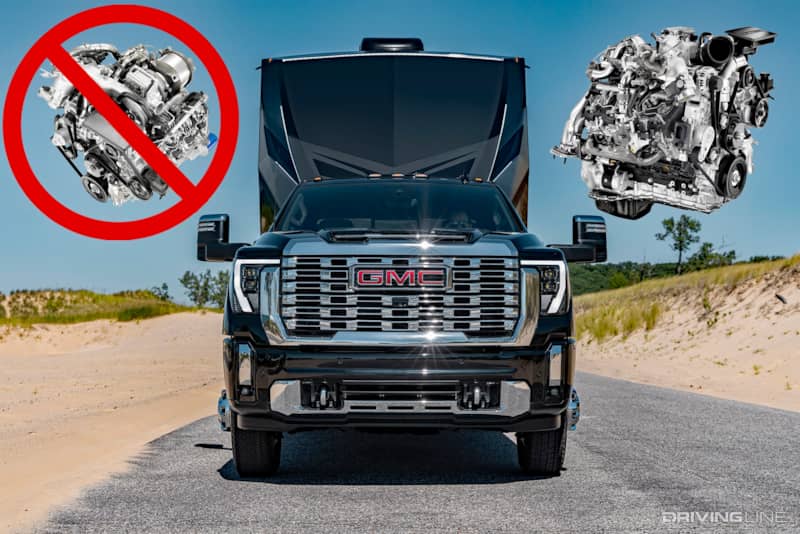
First, expect a new, bigger cube Duramax to target 550 to 600 hp and more than 1,200 lb-ft of torque. Then expect a revised, stronger version of the current 10-speed Allison to handle it—if not a brand-new, medium-duty-grade automatic. Over in Auburn Hills, Ram may lobby Cummins to build a larger, torquier inline-six or, at the very least, talk them into wringing even more horsepower and torque out of the current 6.7L platform. Then, regardless of engine, expect both manufacturers to debut new, stronger chassis’ and go after those coveted, best-in-class towing figures. Plan on the next two to three years being very exciting in the diesel truck segment, as GM and Ram reengage in the never-ending torque war.
Why GM And Ram Have To Step Up Their Game
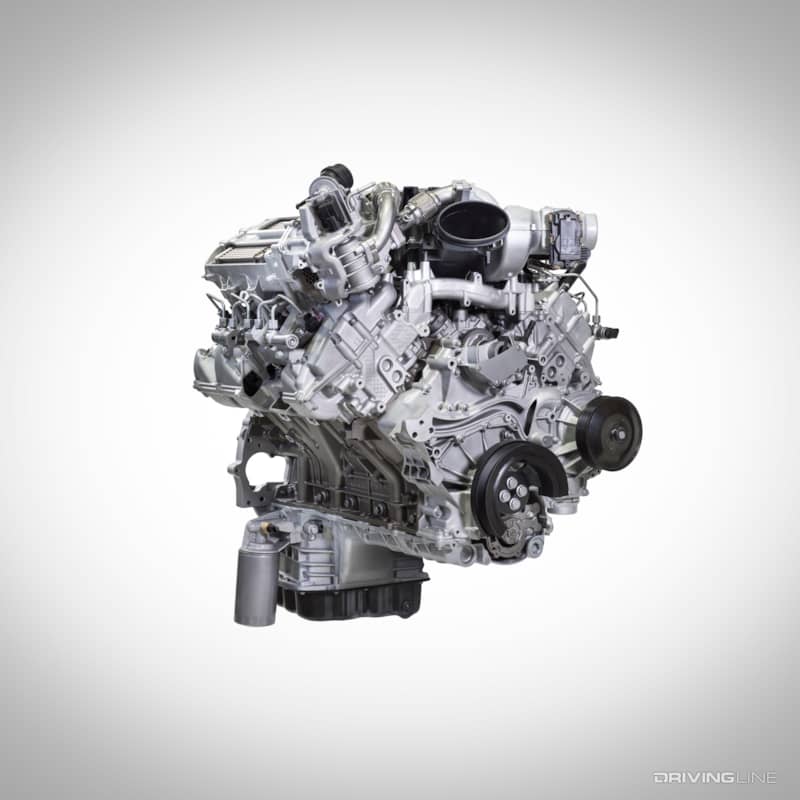
This is the reason GM and Ram seem to be moving in slow motion at the present time: Ford’s high output 6.7L Power Stroke. Tweaked and perfected since its ’11 model year debut, the ’23 H.O. version of the 6.7L Power Stroke boasts low compression, forged-steel pistons, revised and high-flow (reverse flow) cast-aluminum cylinder heads, a 36,000-plus psi common-rail injection system and is backed up by the most reliable automatic transmission in the industry. It turns out a competition-killing 1,200 lb-ft of torque and a class-leading 500 hp. Ford’s reliable, refined diesel V-8 makes towing a breeze in any Super Duty, be it an F-250, F-350 or F-450. And when the H.O. Power Stroke is paired with a properly equipped F-450, gooseneck towing capacity checks in at a colossal 40,000 pounds.
The 6.6L Duramax—The Old Man

We know the General’s 6.6L Duramax has undergone many changes since coming online back in 2001, but much of the same basic architecture is still in place today. And by coming up short of the 1,000 lb-ft of torque mark for the big ’24 model redesign (975 lb-ft), it had us wondering if the manufacturer knows its cast-iron block, aluminum head, 403 ci platform is nearing the end of its capabilities. That, or GM worries that its Allison-branded 10L1000 automatic transmission is not up to the task of handling four-digit torque. Aside from the powertrain itself, GM’s back-of-the-pack towing capacity isn’t doing the brand any favors either.
GM’s Potential 8-liter Engine
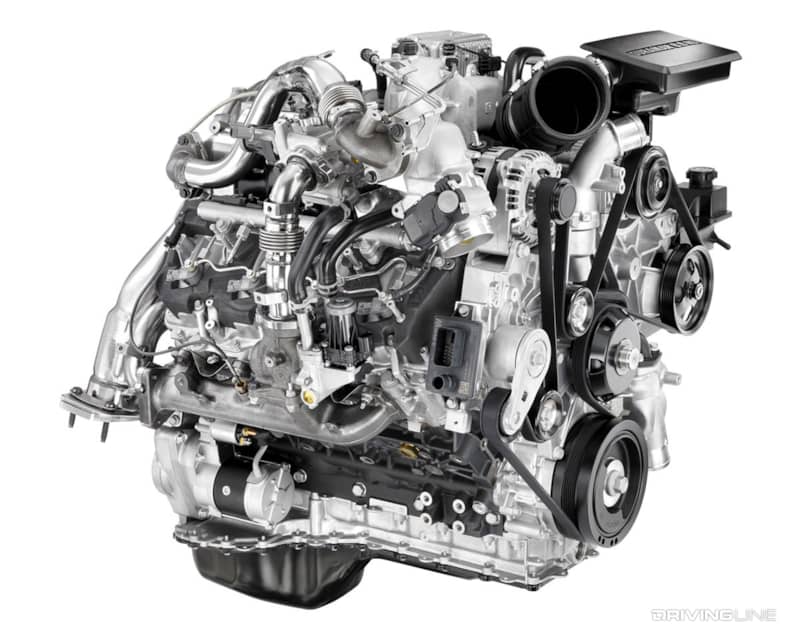
Although nothing official was ever leaked, some of The Big Three truck media are convinced GM is developing an 8.3L diesel engine to compete with Ford’s high output Power Stroke. While we think a high output version of the 6.6L Duramax is just as plausible, entertaining the 8.3L idea is a lot of fun. With 505 cubic inches to work with, truck owners could expect at least 550 hp (and possibly 600 hp) right off the showroom floor. And it goes without saying that at least 1,200 lb-ft of torque would be on tap, with the potential to go much higher should Ford (or Ram) up the ante. Of course, 8.3 liters of displacement would make it the largest diesel engine ever offered in a pickup truck, which has a nice ring to it.
GM’s Biggest Weak Link (It’s Not The Engine)
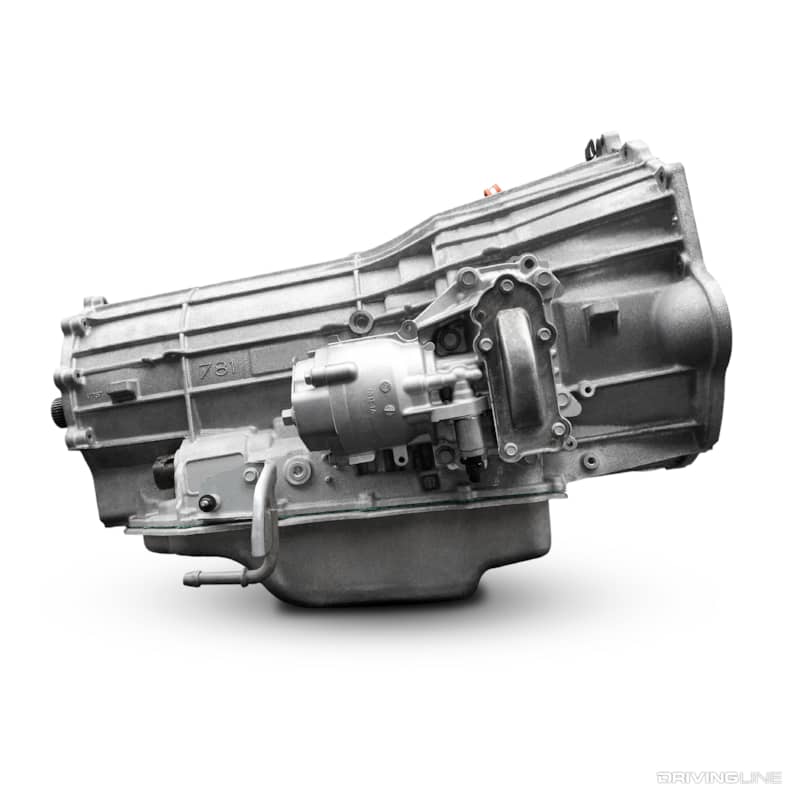
Based on everything we’ve seen from the 10-speed Allison behind ’20-present Duramax engines, it will need serious improvements to handle an engine turning out 1,200 lb-ft (or more). The E-clutches (used in Overdrive) in particular are known to often fail in the current 10L1000 automatic, and a weak main drum is notorious for allowing clutches to blow completely through it. If these failures are already occurring with the 470 hp, 975 lb-ft version of the 6.6L Duramax in front of it, what do you think will happen with 25-30 percent more power sent its way? The task will call for a complete beef-up, from head to toe, of the current Allison, or a true, medium-duty transmission will need to be sourced (or built).
What Engine To Expect From Ram
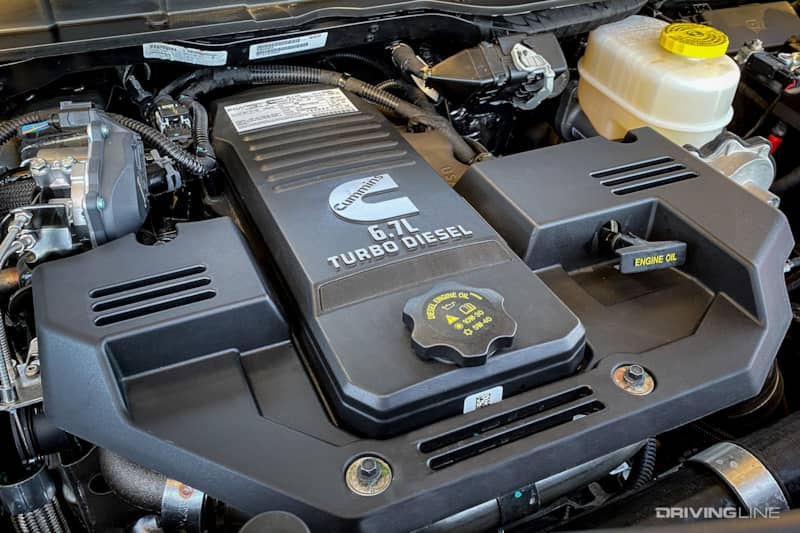
Ram just changed over to a CGI block 6.7L Cummins in 2019, but this high output version of the I-6 has already been uprated from 1,000 lb-ft at its launch to 1,075 lb-ft at present (along with being taken from 400 hp to 420 hp). It’s also faced a massive high-pressure fuel pump recall for the common-rail injection system and is plagued by lifter issues (adjustment-free hydraulic lifters having debuted in 2019, as opposed to the problem-free solid lifters employed from 1989-2018). Other than those issues, the former having been solved for good with a reversion back to the Bosch CP3, the 6.7L Cummins is a solid performer and likely still has plenty of performance potential trapped within it. We can’t see Cummins building a larger displacement engine for Ram at the present time, but we would never rule it out completely.
What Transmission To Expect From Ram
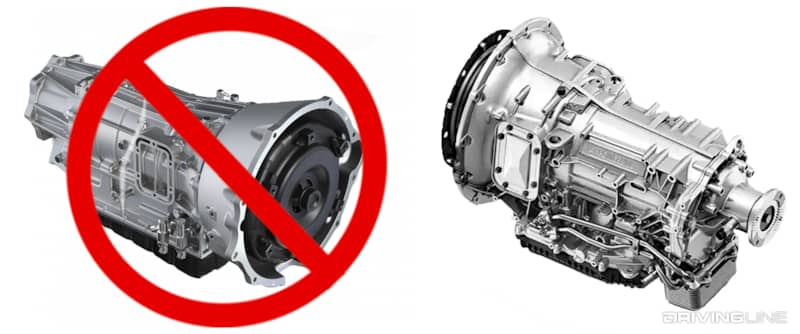
Let’s face it, the Cummins option in Ram’s heavy-duty trucks has always been held back by weak transmissions. Transmission failures, shortcomings and quirks with both the 68RFE and Aisin AS69RC have led to many owners abandoning brand loyalty in order to get into a late-model Super Duty. Ram’s lack of meaningful interior and exterior updates in recent years has also no doubt contributed to Ford’s pulling away from the rest of the field in terms of truck sales. But as we reported back in April, Ram has an eight-speed ZF-sourced automatic on the way (a.k.a. “ZF Powerline” or “PowerLine 8AT”). Based on similar offerings from ZF, it should hold up better than either of Ram’s current two offerings.
What To Expect From Both GM And Ram
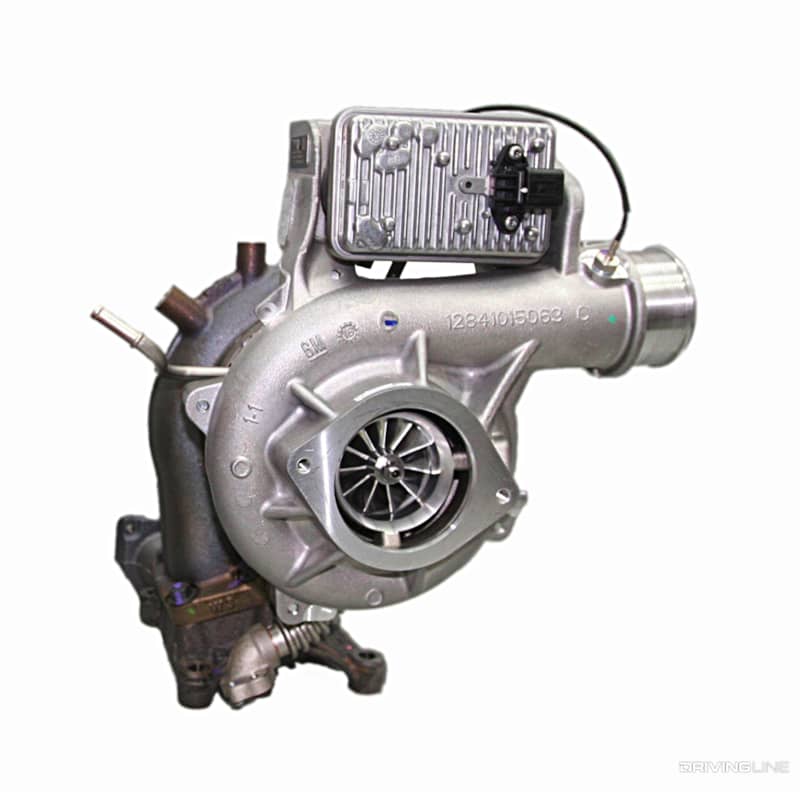
Cleaner burning engines. Whether GM and Ram upsize their engines or not, their future diesel power plants will produce even fewer tailpipe emissions than they do right now. This is because new, even more stringent diesel emissions standards are on the way for model year 2027. Would a larger displacement engine have an easier time meeting tighter emissions standards? Absolutely. But it’s not a requirement. And despite the tighter NOx regulations on the horizon, don’t expect any significant changes in exhaust aftertreatment (EGR, DOC, DPF and SCR) or turbo technology (VGT). However, if bigger cubic inch engines are unveiled, expect a larger turbocharger to feed the engine—potentially somewhere in the realm of a VGT equipped with a 62 to 65mm compressor wheel inducer.
What Else To Expect From GM And Ram: Towing Supremacy
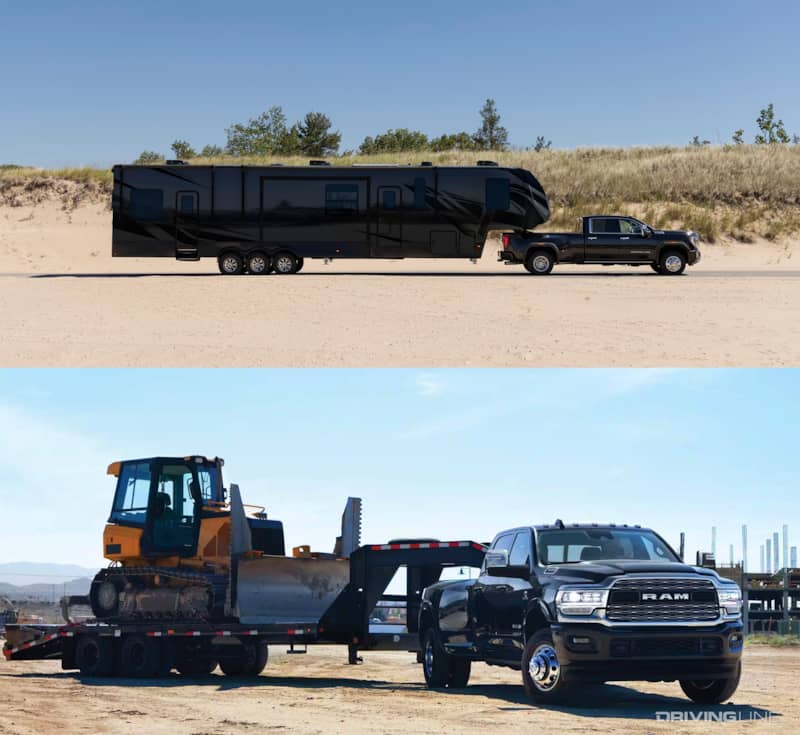
It’s foolish to think that GM and Ram aren’t interested in laying claim to what is arguably the most coveted accolade in the heavy-duty pickup segment, maximum towing capacity. Both have held this crown before, but in recent years it’s a metric that Ford has owned most often. Now for the bonus question: which truck maker will be the first to tow 50,000 pounds? Sounds wild on paper, but we know it’s coming at some point. After all, 30,000 pounds of towing capacity seemed outlandish two decades ago and now each of The Big Three are well beyond that with their 3500 and F-350 offerings. Of course, the ability to tow 25 tons is something that would be made more manageable with a larger displacement diesel engine under the hood…
More From Driving Line
- Hey, we’ve been correct in our OEM predictions before. Just sayin’…







